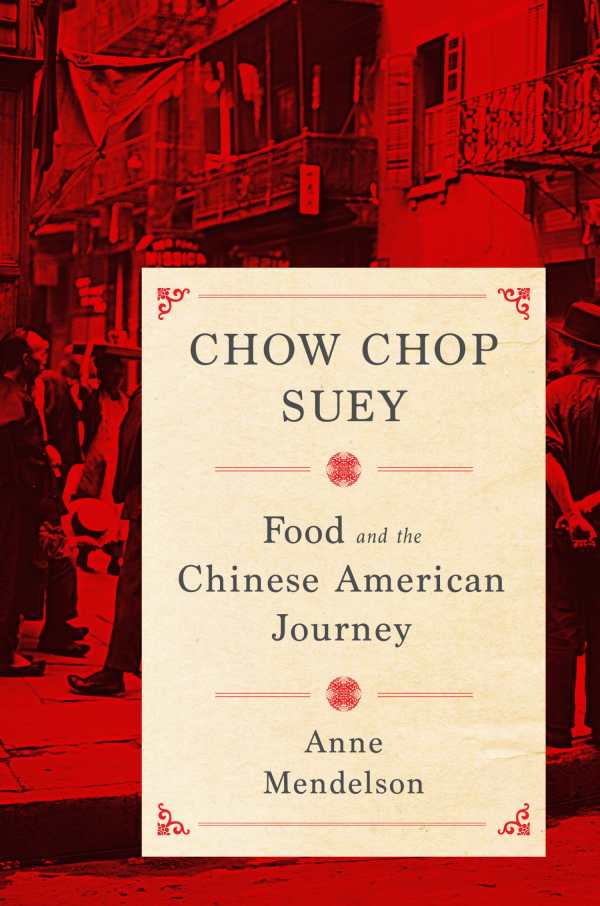Chow Chop Suey
Food and the Chinese American Journey
The book shows that the popularity of the cuisine is due, in part, to the fact that it was never strictly Chinese.
Anne Mendelson’s Chow Chop Suey: Food and the Chinese American Journey is a thoughtful and absorbing study of how Cantonese laborers from the poorest region of China established the cuisine that took America by storm.
All immigrants bring their favorite dishes to America with them, but the Chinese experience was unique. Impoverished workers, drawn by the California gold rush, found doors slammed in their faces. Laws forbade Chinese prospecting and excluded the Chinese from the labor force.
Yet, according to Anne Mendelson, it was the virulence of racism that forced Chinese immigrants to become entrepreneurs. Her book traces the dual integration of Chinese people and Chinese food into the American mainstream from their initial migration to the 1970s, when focus shifted to Hunan, Szechuan, and other regional cuisines.
American-Chinese cuisine is a trickle-up story, from the first ventures that supplied inexpensive, filling, and tasty food to railroad workers, to its entry into haute cuisine, thanks to the enthusiasm of American celebrities. The book shows that the popularity of the cuisine is due, in part, to the fact that it was never strictly Chinese. Not all the ingredients available in Canton could be found in America, nor did all Cantonese dishes please Americans. Chinese food got its toehold by adapting and incorporating American flavors and ingredients, making it an early and highly successful experiment in fusion cuisine.
Though clearly a work of scholarship, prose is accessible and laced with interesting anecdotes. In explaining why soy sauce is ubiquitous on Chinese-American tables, for example, Mendelson notes that the condiment is used sparingly in traditional Cantonese dishes, but Americans like the brown tint it gives dishes like crispy fried rice. In short, it makes the food look the way Americans believe it should look.
This warts-and-all story of America’s response to a large and productive segment of the immigrant population sheds light not only on a unique cuisine, but on how immigrants and long-time residents interact to produce a constantly new and dynamic national culture.
Reviewed by
Susan Waggoner
Disclosure: This article is not an endorsement, but a review. The publisher of this book provided free copies of the book to have their book reviewed by a professional reviewer. No fee was paid by the publisher for this review. Foreword Reviews only recommends books that we love. Foreword Magazine, Inc. is disclosing this in accordance with the Federal Trade Commission’s 16 CFR, Part 255.

